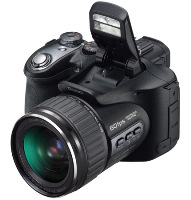
The Origins Of The Digital Camera
The digital camera is now a bona fide element of the modern world, uploading pictures to computers and posting these images onto the internet so that they are viewable by almost anyone in the world is now a facet of the world in which we live. But where has this device come from? While the history of the film camera has been documented considerably, its digital cousin has not had the same treatment. Hopefully the following article will be able to highlight some of the formative moments in the development of the digital camera.
The digital camera is believed to have largely come about due to the work of a man named Eugene F. Lally, a man who worked in the production of jets rather than the photography industry. It was his activities outside of the working world however that led him to create a device that was capable of recording images digitally. At this stage however Lally never intended for the device to enter the public domain, he wanted astronauts to use it whilst in space to photograph planets and subsequently devise their position.
Even though Lally was a forward thinking man his idea never truly bore fruit. This was wholly down to the fact that at the time the electrical components for such a device were not advanced enough. It was in 1975 that an engineer named Steven Sasson first began work on a digital device, this time the activities were carried out during working hours, Sasson working for the Eastman Kodak Company. This inaugural device combined existing Motorola components with Kodak camera pieces and CCD sensors manufactured by Fairchild.
The camera however was not exactly portable; weighing around four kilos it was relatively heavy. Additionally it did not have a viewing screen, the images being recorded onto a cassette tape that needed a special device to view the photographs. As a genesis device though it was revolutionary, despite the twenty three second shutter lag, .1 megapixel resolution and only being able to record images in black and white. As a result of these limitations Kodak invested more money into film camera rather than the digital variety.
1981 is the next important time for the digital camera. Even though some digital cameras were developed during the seventies the early eighties saw the release of the Sony Mavica. This video camera could not be considered the perfect device for capturing still images but did show how visual information could recorded digitally, even if at this stage the information was recorded upon floppy discs rather than a hard drive.
Throughout the eighties a number of companies manufactured camera varieties used almost solely by government agencies and laboratories. The first camera to hit the shops was the Dycam Model1, a camera that went on sale in 1990 and comprised a CCD sensor capable of recording images and uploading them to a PC for storage.
Apple's Quick Take 100 however revolutionised the market and was the first digital camera to come in under a thousand dollars. Gradually prices were reduced and with the widespread of use media cards the holding capacity of the devices was increased greatly. From this time onwards the digital camera has continued to become more affordable, creating a convenient way for photographers to snap away and manage their own photo production.
Technology expert Thomas Pretty studies the development of the digital camera from the seventies through to the present day and how it has become one of the most popular digital devices in the modern age.